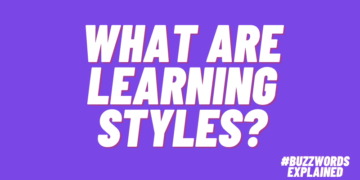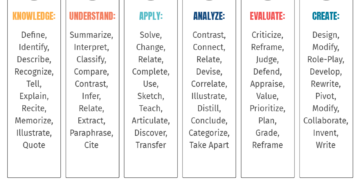Are You Making These Common Audio Mistakes?
Audio is an essential element of eLearning, but the problem is that many organizations get it wrong. High-quality audio will lead to better learning outcomes. When we speak of audio quality, we’re not just talking solely about its technical nature. We’re talking about the value it provides to the overall eLearning experience. The most successful eLearning solutions are all-encompassing and provide learners with an immersive learning experience. These courses achieve this by incorporating a variety of media elements. Audio is one of the most popular elements, but it doesn’t come without its pitfalls. In order to create the best learning experience and get the full value from an eLearning program, course owners need to use audio the right way. Only by avoiding the pitfalls of audio can we hope to create the engaging learning experience that your audience craves.
Pitfall #1: On-Screen Text Matching Audio
One of the biggest mistakes we see from eLearning courses is when a narrator reads text as it’s shown on-screen. Many eLearning platforms are struggling because their libraries are based on this approach. It was considered acceptable in the past, but today learners expect a more effective and seamless experience. Learners process text and audio in different ways so they don’t gain anything from having audio that copies text word-for-word. In fact, they lose out on vital information. Numerous studies back us on this point, Clark and Mayer’s redundancy principle being the most prominent among them. This study tells us that having audio that reads the text word-for-word is redundant since people can’t learn from both at the same time.
Additionally, people process text and audio at different rates so their brain is thrown off by the mismatched speed at which they process the two. Individuals listen to audio at a slower rate than they read. Learners can replay audio, but they cannot make the audio faster. They don’t have the same level of control over the content.
Text and audio require a unique approach if they’re to be combined effectively. Merging audio with on-screen movement during a tutorial video is one example. Another example is using animation to illustrate important points from the audio. Learners can focus on short visual bursts like charts and still process the audio. In fact, when visuals and audio are merged effectively, it greatly enhances the cognitive experience. Any text used on screen must be concise and kept to a minimum so that the listener’s brain isn’t overwhelmed. Another option is to time the text so that it doesn’t coincide with the audio.
Pitfall #2: Audio In eLearning Is Often Dry And Boring
Dry, boring audio narration is more common than you’d think. Listening to someone reading a PowerPoint presentation line-by-line isn’t engaging. It takes all your energy just to stay awake. What learner wants to listen to someone reading a report? Save those reports for shareholder meetings.
Engaging Script
It all starts with a script. There is a big difference between writing text for readers and writing a script that’s going to be read aloud. Written text like blog posts, articles, manuals, policies, and even PowerPoint presentations don’t have appeal when spoken. On the other hand, an Instructional Designer writes scripts with a narrator in mind. They are short and concise in order to deliver information as succinctly as possible. An Instructional Designer carefully creates a script to bring the course to life and showcase key concepts. A script gives the narrator the information they need to convey the message but leaves them room to add in their own skills and personality.
Engaging Voice
Engaging narration is a form of acting. A good voice artist demands attention. They deliver audio with the right intonation and can add emotion to the voiceover. Voice talent will change their tone to add emphasis to certain points. They will pause when necessary to give the listener time to absorb information. Voice talent also identifies with the target audience, so they are able to find a voice that speaks directly to them. It brings audio to life in every way and creates an engaging experience.
To overcome this issue, you need two essential elements—a scriptwriter and voice talent. Just having one or the other is not enough. You must have both. If one is lacking, then the entire experience will suffer. A well-written script is still essential even with narration from AI-generated voices. The use of contractions, welcoming language, and friendly speech patterns are essential. Without this, the audio is both emotionless and difficult to understand.
Pitfall #3: Updating Audio Can Be Expensive
Audio is considered much less flexible than text when it comes to updating it. With text, you can simply identify the information and then quickly change the needed words. But with audio, updates require a more rigorous process. You’ll have to replace an entire audio file to change a single word on an eLearning page.
As a result, audio might seem like a less flexible approach. Training material becomes dated and audio inevitably requires updating. Professional voice talent can record the new clips but be mindful that they might not match perfectly. The voice talent can control the room’s ambient noise but can’t always recreate the same vibrancy and expression in a rerecording. That’s why it’s important to create audio for course content that is unlikely to change and to get sign off on the script.
Pitfall #4: Audio In eLearning Is Prone To Distractions
Audio in eLearning can’t be accessed all the time. Certain environments have too many distractions present. That’s why a clear learner persona is important. For example, if many learners take their training during their commute, they might not be able to fully engage in the lesson if there are loud people around them. We must take these scenarios into consideration when creating an eLearning experience.
Despite all the obstacles that present themselves, audio can be extremely powerful in eLearning when integrated properly. That’s the key. Integrate it the right way and you’re left with content that immerses your learner, as based on your learner persona. Do it wrong and you’re left struggling with one of the pitfalls on this list.
Pitfall #5: Poor Audio Quality
Quality is a word that’s thrown around by everyone. But audio can affect how people learn your material. As discussed, having the right voice talent and script are essential to creating an amazing audio experience. If you decide to have someone in-house create the voice-over, make sure they understand they’re not just reading from a script. They are engaging the audience. That means their tone, pace, and intonation are essential to creating an engaging listening experience.
If you are using AI-generated audio, choose a factual narration script. The AI voice will not be suitable for characters with emotion. Spend some time selecting a voice that can read your text accurately, adjust for pronunciation, add pauses, and fix acronyms. Realize that no matter what, it will not sound as smooth or emotive as a human. But you will benefit from the cost and edit savings, as well as the fact that there are no audio studio setups or fees.
Pitfall #6: Skimping On One’s Own Recording
Perhaps to generate both emotions and save money, you decide to record the audio yourself. If so, secure the right equipment to generate quality. Fortunately, microphones are affordable in today’s digital world. Don’t use your phone or the built-in microphone on a laptop. You’ll also need the right recording application. Audacity is a wonderful free option that is used by a lot of content creators. There are also a number of premium tools that provide advanced options, but it’s not necessary to have all the bells and whistles.
The recording location itself plays a pivotal role if you’re recording the audio yourself. You must record audio in a quiet location free of any outside noise. It must also be a place that doesn’t reverberate; otherwise, you’re left with audio that echoes. Some voice artists do their studio work in their closets using mattresses, foam, and pillows to create the right recording environment. A little creativity can save you a lot of money on a recording studio.
The Bottom Line
Let’s recap so that you don’t fall prey to the same missteps made by so many eLearning solutions. The use of audio is situational. It should be used in scenarios where the learning experience is enhanced with audio. Always allow the user to control the audio. Not only is this an accessibility requirement, but it improves the learner experience. Not every environment allows learners to access audio so it’s important to give them a choice of how they learn. Avoid applying audio that simply reads on-screen text. This is redundant and is only acceptable in limited use with instructional text where the learner is to complete a task. Even then, text-only instructions are preferable.
Finally, be sure that you’re producing a quality audio experience. If you are having someone in-house voice it, then be sure they are engaging the audience. Don’t forget that AI is also an option as long as you’re using a factual narration script. Even then, it’s essential that you choose the right AI voice. It must be able to read text accurately, adjust for pronunciation, and add pauses. Overall, audio can be a wonderful enhancement to the learning experience, but it can also hinder the experience if done incorrectly. Make sure you get it right!

Beyond the Sky
We infuse learning with marketing principles for learning that sticks. We uniquely combine leading edge marketing experience to change behavior with modern learning techniques to change learner behavior!
Originally published at www.beyondthesky.ca.


















